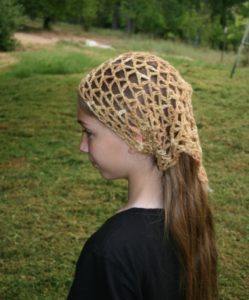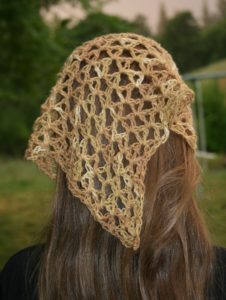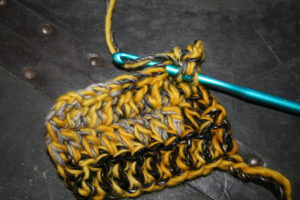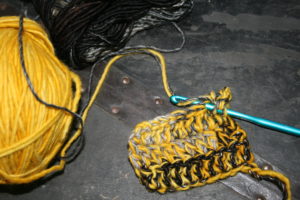 Since I have been playing around with some stitches, and attempting to finish some yarn in my stash, I have a free pattern to share. Gotta Love that Wrap is worked entirely of Love Knots! If you are not familiar with the stitch I have a tutorial here.
Since I have been playing around with some stitches, and attempting to finish some yarn in my stash, I have a free pattern to share. Gotta Love that Wrap is worked entirely of Love Knots! If you are not familiar with the stitch I have a tutorial here.
I love how you can use this pattern really with any yarn, although I prefer it with lighter weight yarns. The Wrap in phots here was actually worked up in Plymouth Yarns Linaza, which is 50% alpaca, 25% linen and 25% Tencel, so it really hold the shape of the knot.
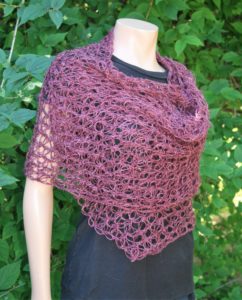 The benefit of this yarn is that it really allows the yarn to go along way, the yarn I used was 100g/440yards, and as you can see it made for a wide and long wrap. So feel free to pull something out of your stash and give it a try, or purchase that one skein in a color you
The benefit of this yarn is that it really allows the yarn to go along way, the yarn I used was 100g/440yards, and as you can see it made for a wide and long wrap. So feel free to pull something out of your stash and give it a try, or purchase that one skein in a color you 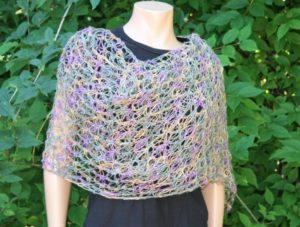 love.
love.
This design is actually only a 2 row repeat, so it is pretty simple and relaxing to work. I would recommend that you place a stitch marker somewhere along row 1, to note it as the bottom edge. As the fabric is worked along and becomes squarer, it can be difficult to discern which way the rows are being worked.
The pattern is essentially creating the points of triangles in each even row, the closing it off to a straight edge every odd row, and when the pattern states to slip stitch in the knot, the knot is recognized as the most closed point of the stitch (where is was finished).
Gotta Love that Shawl
Materials:
- One skein of any yarn, light weight preferred. The longer the yardage the longer the wrap
- Hook size compatible for yarn weight
Gauge: Gauge is not critical for this project.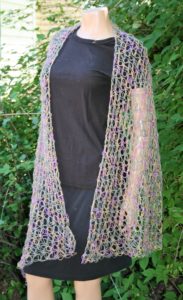
Special Stitches
Love Knot: See here
Abbreviations:
Rep=repeat
Sl st= slip stitch
Row 1: 18 Love knots, turn.
Row 2: Skip first knot, sl st in 2nd knot, [2 love knots, sl st in next knot] rep 15 times, turn.
Row 3: 2 love knots, sl st in next knot, [1 love knot, sl st in next knot] rep 15 times, turn.
Row 4: 2 love knots, sl st in next knot, [2 love knots, sl st in next knot} rep 15 times, turn.
Rep Rows 3 & 4 until desired length.
Last Row: Rep Row 3, fasten off. Weave in ends, block as desired.

